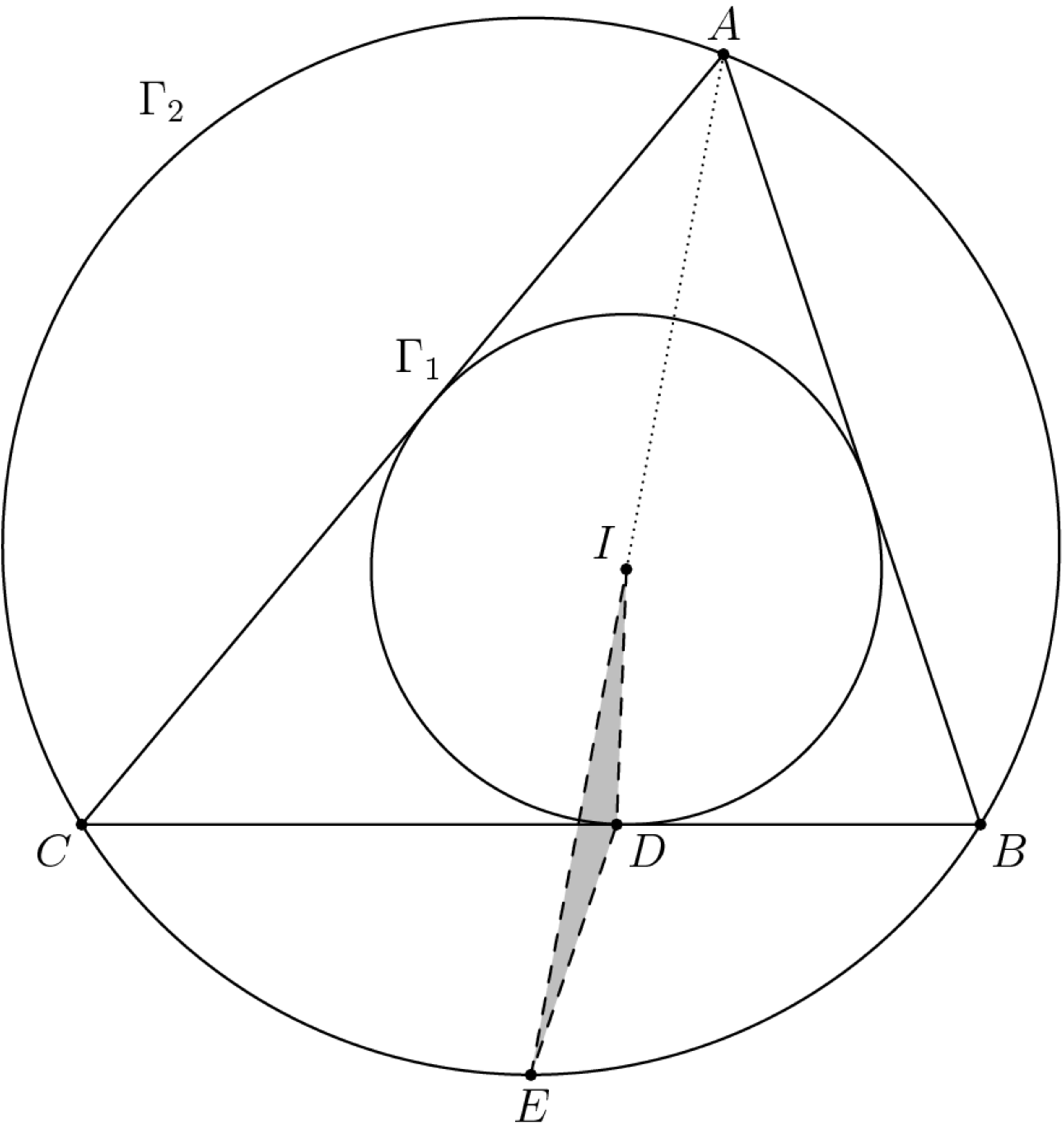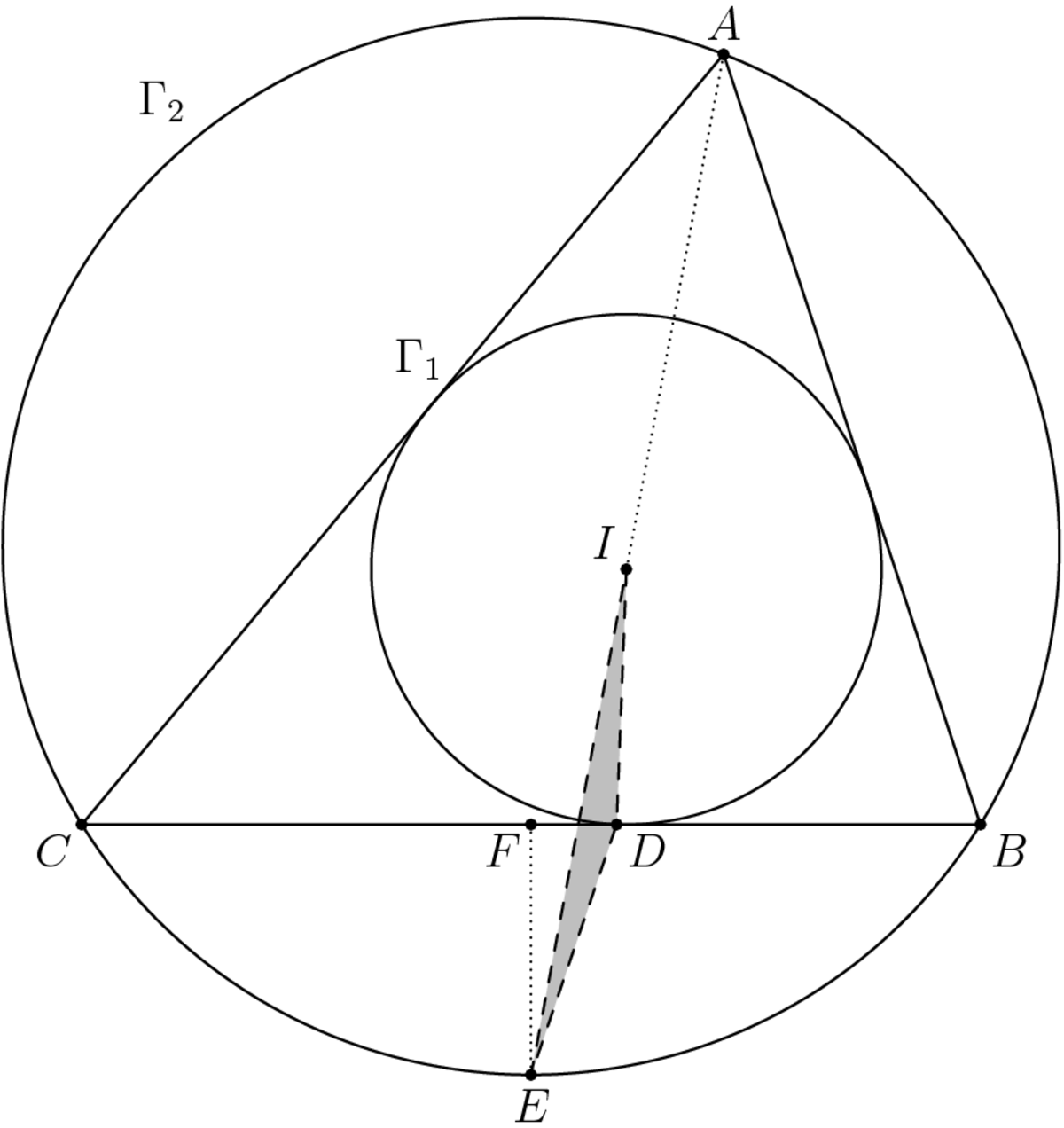Area of Triangle made from Incircle and Circumcircle
Triangle
, shown below, has sides
. The incircle of
is
with center
while circle
is the circumcircle of
. The point of tangency of
at side
is located at
and the extension of
intersects
at
. Find the area of
.

The answer is 2.
This section requires Javascript.
You are seeing this because something didn't load right. We suggest you, (a) try
refreshing the page, (b) enabling javascript if it is disabled on your browser and,
finally, (c)
loading the
non-javascript version of this page
. We're sorry about the hassle.
Using a combination of Heron's Formula and another formula for the area of a triangle, r s (with r the inradius and s the semiperimeter), we can find the radius of Γ 1 to be 4 . We now have a side-length of I D E , I D = 4 . If we can find the altitude from I D , we'll be done.
Notice that because A , I , and E are all concurrent, and because I is the incenter of A B C , then by definition, E bisects BC ⌢ . Dropping a perpendicular from B C to E , we get the following: Since
E
bisects
BC
⌢
then F bisects
B
C
. Because
B
C
=
1
4
,
C
F
=
7
. Now define point of tangencies of
Γ
1
on
A
B
and
A
C
,
G
and
H
respectively. Then we have
A
G
=
A
H
=
x
,
B
D
=
B
G
=
y
,
and
C
D
=
C
H
=
z
. We have
x
+
y
=
1
3
,
y
+
z
=
1
4
,
x
+
z
=
1
5
. Solving gives
x
=
7
,
y
=
6
, and
z
=
8
. We only care about
C
D
=
z
=
8
, because we get
F
D
=
C
D
−
C
F
=
8
−
7
=
1
. We now have the altitude and can find the area:
2
1
×
4
=
2
.
Since
E
bisects
BC
⌢
then F bisects
B
C
. Because
B
C
=
1
4
,
C
F
=
7
. Now define point of tangencies of
Γ
1
on
A
B
and
A
C
,
G
and
H
respectively. Then we have
A
G
=
A
H
=
x
,
B
D
=
B
G
=
y
,
and
C
D
=
C
H
=
z
. We have
x
+
y
=
1
3
,
y
+
z
=
1
4
,
x
+
z
=
1
5
. Solving gives
x
=
7
,
y
=
6
, and
z
=
8
. We only care about
C
D
=
z
=
8
, because we get
F
D
=
C
D
−
C
F
=
8
−
7
=
1
. We now have the altitude and can find the area:
2
1
×
4
=
2
.